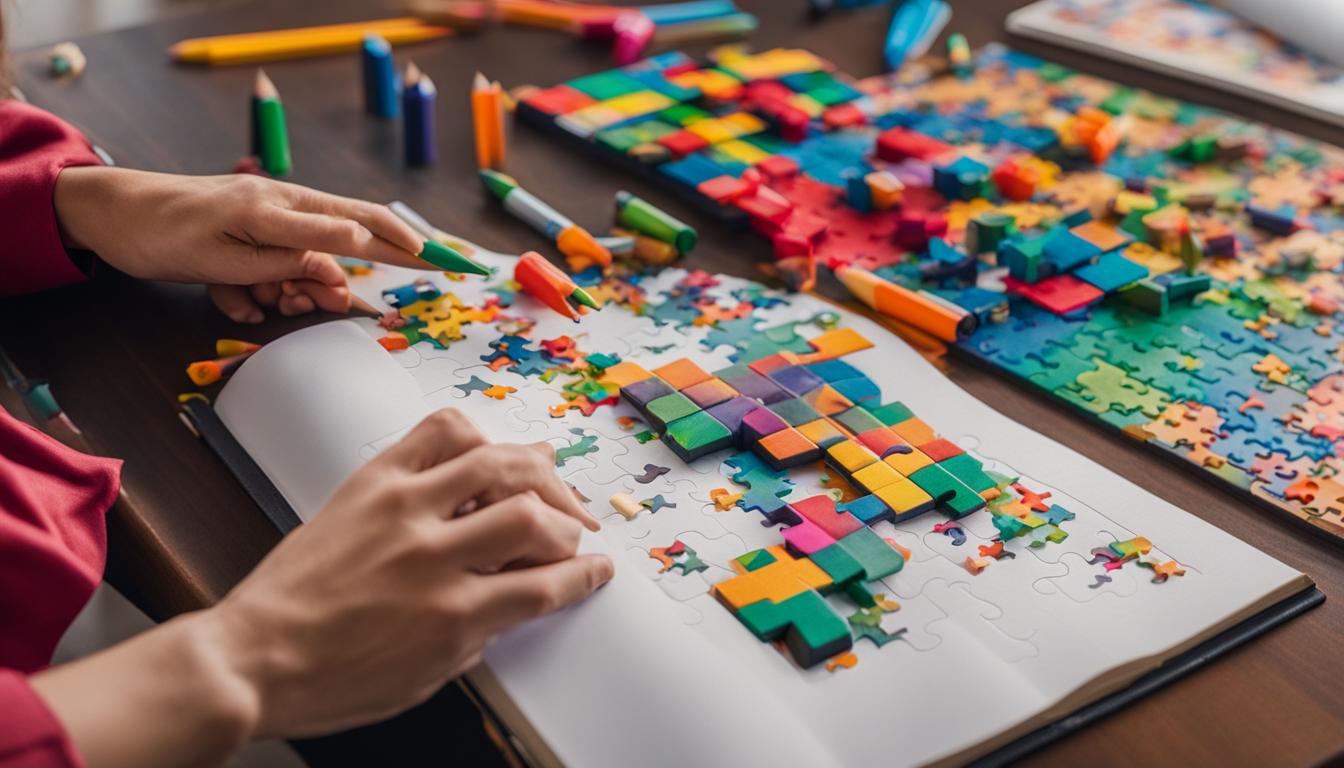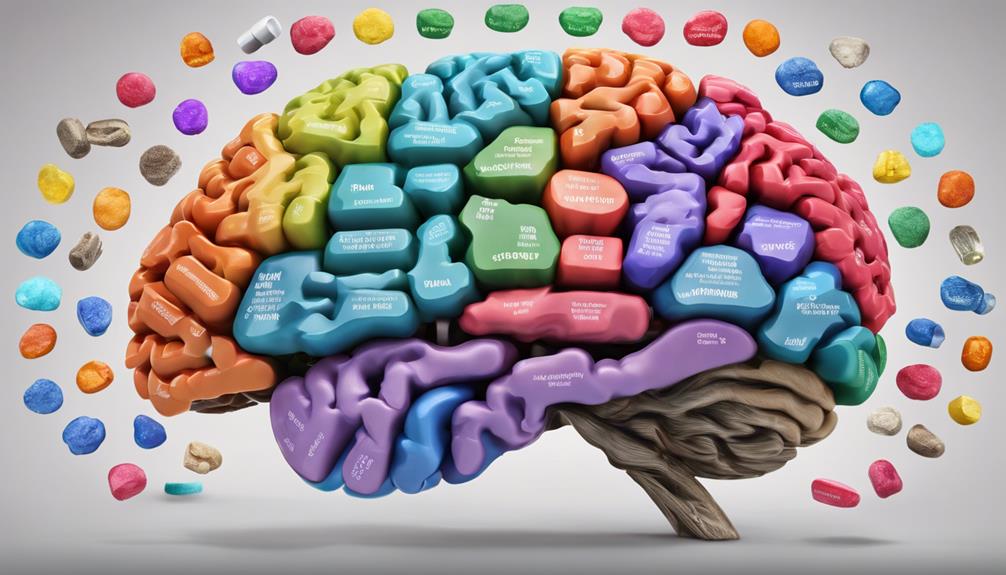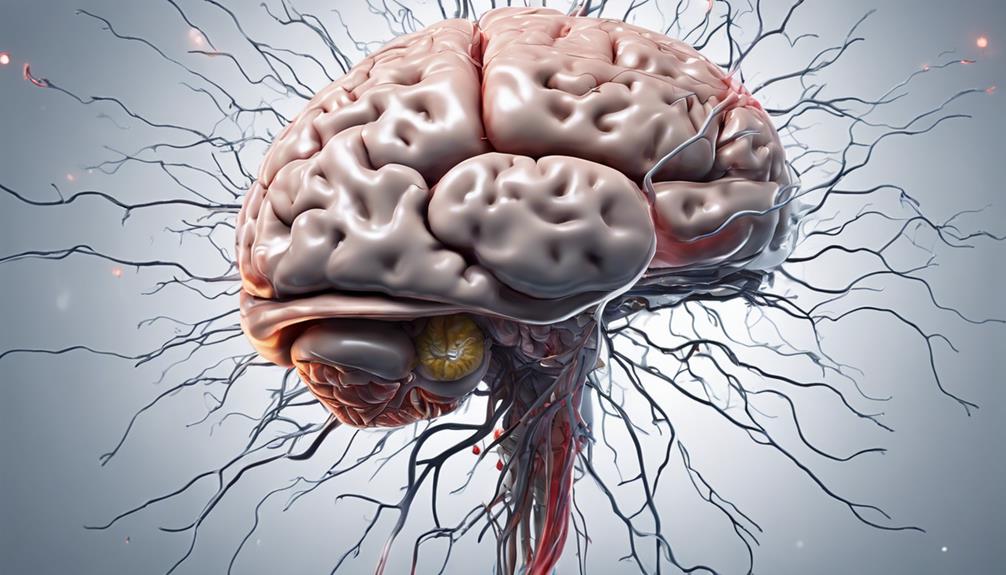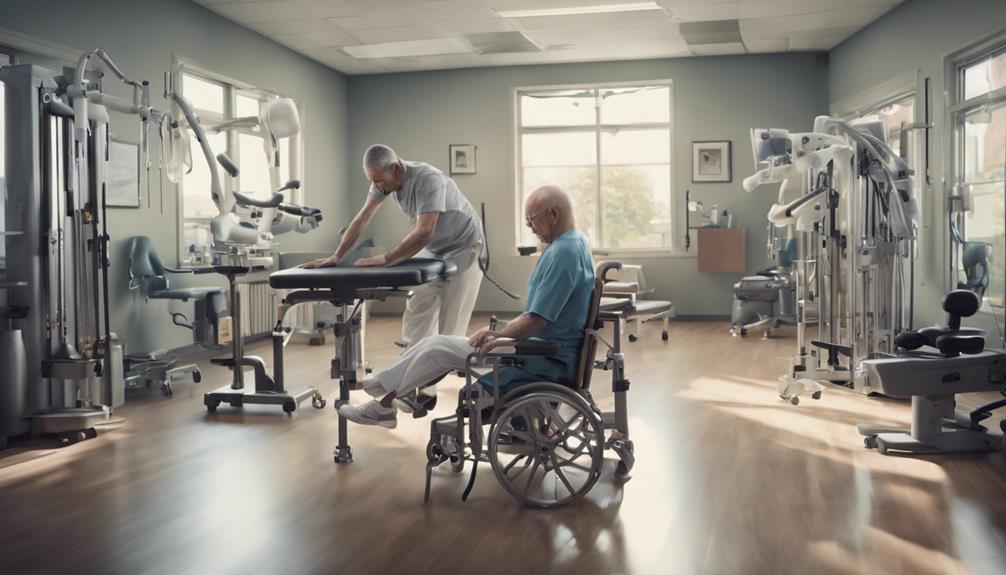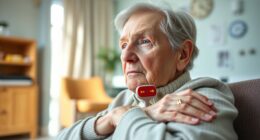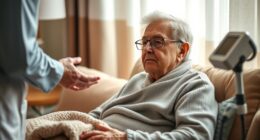Did you know that engaging in brain exercises can be a helpful way to assist in stroke recovery? These exercises can help restore cognitive functions such as critical thinking, problem-solving, and memory, while also promoting the brain’s ability to repair itself and develop new neural connections. Including brain exercises in a comprehensive stroke recovery plan can significantly improve cognitive function and accelerate the recovery process.
When it comes to stroke rehabilitation, focusing on cognitive rehabilitation is just as crucial as physical and occupational therapy. After a stroke, many individuals experience difficulties with thinking, reasoning, and memory due to the damage caused by the lack of blood flow to the brain. Brain exercises, such as board games, memory games, and cognitive therapy, specifically target these cognitive skills, aiding in their recovery.
In this article, we will explore various brain exercises and activities that can help boost healing and enhance cognitive function after a stroke. From classic board games to memory games, strategy games to art and crafts, we will discover the wide range of options available for stroke survivors looking to improve their brain health and regain lost capabilities.
Are you ready to unlock the power of brain exercises for stroke recovery? Let’s dive in and discover the fascinating world of cognitive rehabilitation!
Key Takeaways:
- Brain exercises play a crucial role in stroke recovery, helping individuals regain thinking, reasoning, and memory skills.
- These exercises stimulate neuroplasticity, allowing the brain to heal and form new connections.
- Incorporating brain exercises into a comprehensive recovery plan can significantly improve cognitive function.
- Board games, memory games, strategy games, art and crafts, and meditation are all effective brain exercises for stroke recovery.
- Engaging in brain exercises promotes overall healing and can improve the quality of life for stroke survivors.
The Importance of Stroke Recovery Activities
Stroke recovery is a multidimensional process that involves physical, emotional, and cognitive healing. While physical and occupational therapies focus on rebuilding strength and motor function, it is equally essential to address the cognitive challenges faced by stroke patients. Cognitive abilities such as thinking, reasoning, awareness, and memory may be compromised due to the damage caused by the stroke.
At this critical stage, engaging in stroke recovery activities specifically designed to target cognitive skills becomes imperative. These activities not only aid in the overall rehabilitation process but also help patients transition from the hospital to their home environment. By incorporating brain exercises into the recovery plan, stroke survivors can regain lost capabilities and improve their quality of life.
Stroke recovery activities primarily aim to stimulate cognitive function and enhance neuroplasticity—the brain’s ability to reorganize and form new connections. Rehabilitation exercises that focus on cognitive skills can help restore cognitive abilities, enabling stroke survivors to regain their independence and adapt to their changed circumstances.
Board Games for Brain Stimulation
When it comes to stroke recovery, board games can be a valuable tool for stimulating the brain and promoting cognitive rehabilitation. Classic board games such as Connect 4, Qwirkle, and Battleship offer more than just entertainment – they require concentration, reasoning, organization, and memory skills.
Playing board games with partners or loved ones can also provide socialization, which is an essential aspect of the recovery process. Social interaction not only enhances mood but also helps in re-learning communication skills and building relationships. It is important to remember that stroke survivors should choose games that match their cognitive abilities and gradually increase the level of difficulty as they progress in their recovery journey.
In addition to the cognitive benefits, board games offer a fun and engaging way to exercise cognitive skills and promote brain healing. They provide a structured activity that helps stroke survivors practice decision-making, problem-solving, and strategic thinking. Furthermore, board games can improve attention span and focus, which are crucial for rebuilding cognitive abilities after a stroke.
Incorporating board games into stroke rehabilitation routines can make the recovery process more enjoyable and rewarding. Whether it’s playing games during therapy sessions or engaging in friendly competitions at home, board games offer a therapeutic way to exercise cognitive skills and promote overall brain health.
Benefits of Board Games for Stroke Rehabilitation
Here are some key benefits of incorporating board games into stroke recovery:
- Enhances cognitive skills such as memory, attention, problem-solving, and reasoning.
- Improves socialization and helps rebuild communication skills.
- Provides a structured activity that promotes engagement and learning.
- Offers a fun and enjoyable way to exercise the brain and promote brain healing.
- Boosts mood and reduces stress, contributing to overall well-being.
Example Board Game Routine for Stroke Recovery
To give you an idea of how board games can be incorporated into a stroke recovery routine, here’s an example:
| Activity | Duration |
|---|---|
| Connect 4 | 20 minutes |
| Qwirkle | 30 minutes |
| Battleship | 15 minutes |
| Break | 10 minutes |
| Discussion and social interaction | 20 minutes |
“Playing board games during stroke recovery not only provides cognitive stimulation but also encourages socialization and a sense of accomplishment.” – Dr. Rebecca Collins, Neurologist
Remember, it’s important to consult with a healthcare professional or licensed therapist before incorporating board games into a stroke recovery routine. They can provide guidance on selecting appropriate games and adapting them to the individual’s specific needs and abilities.
Next, we’ll explore the benefits of memory games for cognitive enhancement in stroke recovery.
Memory Games for Cognitive Enhancement
Incorporating memory games into stroke rehabilitation routines can be highly beneficial for cognitive enhancement. Memory games, such as Simon and Tap It, require focus and memory skills. These games provide a fun and engaging way to challenge stroke survivors to follow and remember short sequences, which gradually increase in complexity.
Not only do memory games help improve cognitive function, but some games, like Bop It, also incorporate physical reactions, aiding in the improvement of motor skills and movement post-stroke. By stimulating both cognitive and physical abilities, memory games provide a holistic approach to stroke recovery.
Memory games are particularly effective in cognitive therapy as they target memory skills, which are often affected by strokes. With regular practice, stroke survivors can enhance their memory abilities and overcome cognitive challenges.
| Memory Game | Description |
|---|---|
| Simon | A popular memory game that requires players to repeat a sequence of lights and sounds. |
| Tap It | A game where players must tap a sequence of colored buttons in the correct order. |
| Bop It | A game that tests reflexes and memory by issuing commands to twist, pull, or bop different parts of the device. |
Integrating memory games into stroke rehabilitation routines can facilitate cognitive enhancement, promoting brain healing and improving overall recovery. These games provide an enjoyable way to challenge the brain, improving memory skills and cognitive function in stroke survivors.
Strategy Games for Critical Thinking
Strategy games are excellent cognitive activities for stroke rehabilitation, as they require critical thinking and strategic planning. Games like Catan, Ticket to Ride, and mahjongg challenge players to think ahead, analyze different scenarios, and strategize their moves to achieve a desired outcome.
Engaging in strategy games can be highly beneficial for stroke survivors, as they help exercise cognitive skills and improve cognitive function. By stimulating critical thinking, these games effectively rebuild and strengthen cognitive abilities after a stroke.
Benefits of Strategy Games for Stroke Rehabilitation
Strategy games offer numerous advantages for stroke recovery and cognitive rehabilitation. They:
- Promote critical thinking and problem-solving skills
- Enhance decision-making abilities
- Boost memory and concentration
- Improve planning and organizational skills
- Stimulate creativity and adaptability
- Foster social interaction and engagement
By engaging in strategy games, stroke survivors can enjoy an enjoyable and stimulating way to exercise their cognitive skills while promoting brain healing and recovery.
Example Strategy Game: Catan

Catan is a popular strategy board game that requires players to strategically build settlements, cities, and roads in order to gain resources and control the island of Catan. The game involves negotiation, resource management, and careful planning, making it an excellent cognitive activity for stroke rehabilitation. Players must analyze the game board, anticipate their opponents’ moves, and make strategic decisions to outmaneuver their competition.
| Skills Enhanced by Catan | Explanation |
|---|---|
| Critical thinking | Players must assess different gameplay options and choose the most advantageous moves. |
| Strategic planning | Participants need to plan their actions several turns ahead to achieve their objectives. |
| Decision-making | Choosing the optimal resource investments and negotiating trades require thoughtful decision-making. |
| Problem-solving | Players must overcome various challenges, including limited resources and opponent strategies. |
Playing strategy games like Catan during stroke recovery provides mental stimulation, encourages cognitive function, and helps rebuild critical thinking skills. It also offers a fun and engaging way to enjoy time with friends and family.
Art and Crafts for Cognitive Therapy
Art and crafts activities are not only enjoyable but also provide therapeutic benefits for stroke recovery. Engaging in activities such as drawing, coloring, painting, and crafting can stimulate creativity and offer a means of emotional expression. Additionally, these activities require analytical skills and hand-eye coordination, providing cognitive therapy during the rehabilitation process.
The act of creating art or engaging in crafts requires individuals to think critically, plan their actions, and make decisions, all of which enhance cognitive function. Whether it’s choosing colors, deciding on a design, or manipulating different materials, stroke survivors can exercise their cognitive abilities while enjoying the process of artistic expression.
Moreover, art and crafts activities can also have physical benefits for stroke recovery. Engaging in these activities can improve muscle strength and stamina, aiding in the physical rehabilitation process. Drawing, painting, and crafting often require precise hand movements and coordination, helping individuals regain control and dexterity in their affected limbs.
| Benefits of Art and Crafts for Cognitive Therapy |
|---|
| 1. Stimulates creativity: Art and crafts activities encourage individuals to think outside the box, come up with unique ideas, and explore their imagination. |
| 2. Emotional expression: Creating art provides stroke survivors with a creative outlet to express their thoughts, feelings, and experiences. |
| 3. Enhances cognitive function: Art and crafts require analytical thinking, problem-solving, and decision-making, challenging cognitive abilities and promoting mental agility. |
| 4. Improves hand-eye coordination: Engaging in art and crafts activities can help individuals regain control and dexterity in their affected limbs. |
| 5. Supports physical rehabilitation: Manipulating art supplies and engaging in craft activities can improve muscle strength and stamina. |
By incorporating art and crafts into stroke recovery programs, individuals can enhance their cognitive function, promote emotional well-being, and support overall healing. These activities offer a holistic approach to rehabilitation, addressing both the physical and mental aspects of recovery.

Engaging in New Hobbies for Cognitive Stimulation
When it comes to stroke recovery, incorporating new hobbies into our routine can have a significant impact on cognitive stimulation. Engaging in these activities not only helps us exercise our cognitive skills but also promotes cognitive rehabilitation, supporting our overall healing process.
Learning new skills or picking up new hobbies requires us to use our memory and communication abilities. These activities challenge our cognitive skills and enhance our brain function, allowing us to regain cognitive abilities lost due to stroke.
Some examples of new hobbies that can stimulate our cognitive skills include:
- Learning sign language – Sign language engages our memory and communication skills, while also enhancing manual dexterity. By learning sign language, we can expand our communication abilities and exercise our cognitive function.
- Making scrapbooks – Engaging in scrapbooking activities enhances our creativity and organizational skills. Creating scrapbooks involves sorting and arranging photos, memorabilia, and decorations, which challenge our cognitive abilities and promote cognitive rehabilitation.
- Gardening – Gardening is not only a therapeutic and relaxing hobby but also a great way to exercise our cognitive skills. Planning and organizing the layout of the garden, remembering the specific needs of different plants, and problem-solving gardening challenges all contribute to cognitive stimulation and recovery.
- Bird watching – Bird watching combines the joys of nature with cognitive engagement. Identifying different bird species, remembering their distinct characteristics, and keeping track of bird sightings enhance our observational and memory skills, allowing us to exercise our cognitive function while enjoying the outdoors.
By incorporating these new hobbies into our stroke recovery routine, we can create a stimulating environment that promotes cognitive rehabilitation. These activities not only provide cognitive exercise but also offer a sense of accomplishment and enjoyment. Engaging in new hobbies allows us to explore our interests, learn new things, and regain cognitive skills, ultimately supporting our overall recovery and well-being.

Engaging in new hobbies can exercise our cognitive skills and promote cognitive rehabilitation during stroke recovery.
Sequence Finding for Cognitive Challenges
Looking for a fun and challenging way to exercise your brain and stimulate cognitive function during stroke recovery? Try creating and solving sequence finding brain teasers. These activities require logical thinking, problem-solving, and organization, making them an excellent choice for improving cognitive abilities and promoting brain healing.
Here are some examples of sequence finding brain teasers you can incorporate into your stroke recovery exercises:
Alphabetizing Words: Take a sentence or a list of words and arrange them in alphabetical order. This exercise will boost your organizational skills and challenge your ability to recognize and sequence letters.
Arranging Laundry: Sort your laundry by size or color. Start with a small pile and gradually increase the complexity by incorporating more items. This activity requires logical thinking and problem-solving as you determine the proper order for arranging the items.
Stacking Books: Arrange a collection of books by size, stacking them in ascending or descending order. This exercise challenges your visual perception and coordination, as well as your ability to organize objects based on a specific attribute.
Incorporating these brain teasers into your stroke recovery routine can help improve cognitive abilities by engaging your brain in challenging and stimulating activities. Remember to start with simpler tasks and gradually progress to more complex sequences as you gain confidence and skill.
By practicing sequence finding exercises, you can stimulate your brain, enhance cognitive function, and promote overall brain healing during stroke recovery.

| Sequence Finding Benefits: | Brain Teaser Examples: |
|---|---|
| Improved cognitive abilities | Alphabetizing words |
| Enhanced problem-solving skills | Arranging laundry |
| Stimulated logical thinking | Stacking books |
Money Counting for Cognitive Skills
Counting money is not just a practical skill, but it can also be an effective cognitive exercise for stroke recovery. Engaging in money counting activities can help individuals exercise their quantitative reasoning and short-term memory skills, promoting cognitive function and stimulating the brain.
There are several ways stroke survivors can incorporate money counting exercises into their recovery routine:
- Sorting coins by type: Stroke survivors can practice sorting different coins, such as pennies, nickels, dimes, and quarters, by their respective types. This activity challenges cognitive abilities, requiring individuals to recognize and categorize each coin correctly.
- Counting totals: Stroke survivors can engage in counting the total value of a given set of coins. This exercise requires mathematical reasoning, as individuals need to add up the values of each coin to calculate the total.
- Arranging change: Stroke survivors can practice arranging change in different ways, such as grouping coins by denomination or organizing them in specific patterns. This activity prompts cognitive engagement and offers a practical way to exercise the brain.
By actively participating in these money counting activities, stroke survivors can improve their cognitive skills, enhance mathematical reasoning, and strengthen short-term memory. These exercises provide an interactive and engaging way to stimulate the brain during stroke recovery.
| Benefits of Money Counting for Stroke Recovery | Ways to Incorporate Money Counting |
|---|---|
|
|

Unlocking Cognitive Potential Through Money Counting
“Engaging in money counting exercises not only helps stroke survivors improve their cognitive skills, but it also offers a practical and relevant way to stimulate the brain. By incorporating these activities into their recovery routine, individuals can unlock their cognitive potential and promote brain healing.”
Using money counting as a cognitive exercise during stroke recovery not only helps individuals regain cognitive skills but also provides a practical application of those skills in day-to-day life. The act of counting money promotes focus, concentration, and attention to detail, all of which are essential for cognitive function. These exercises can be tailored to individuals’ needs and abilities, providing a personalized approach to cognitive rehabilitation.
Incorporating money counting exercises into a comprehensive stroke recovery plan can contribute to overall rehabilitation, helping individuals regain independence and improve their quality of life.
Card Matching for Memory Improvement
Card matching games are an excellent way to improve memory and enhance cognitive abilities, making them a valuable tool for stroke recovery. These games require individuals to remember the positions of different cards and find matching pairs, challenging their memory and visual recognition skills.
Stroke survivors can engage in card matching games using a standard deck of cards. Flipping the cards over and trying to find matching pairs not only exercises their memory but also provides an enjoyable and stimulating activity.
This simple yet effective exercise can help stroke survivors improve their memory function and enhance cognitive abilities. By incorporating card matching games into their stroke recovery exercises, individuals can stimulate their brain and promote overall healing.
Benefits of Card Matching for Stroke Recovery
- Improves memory skills
- Challenges visual recognition
- Enhances concentration and focus
- Provides a fun and engaging cognitive exercise
Engaging in card matching games can have lasting benefits for stroke survivors, helping them regain cognitive function and improve their overall quality of life.
| Benefits | Description |
|---|---|
| Improves memory skills | Challenging individuals to remember positions of cards and find matching pairs enhances their memory capabilities. |
| Challenges visual recognition | Identifying matching pairs among a set of cards requires individuals to quickly recognize and differentiate various symbols or numbers. |
| Enhances concentration and focus | Engaging in card matching games requires focus and concentration, promoting mental sharpness and attentiveness. |
| Provides a fun and engaging cognitive exercise | Card matching games offer an enjoyable way to exercise cognitive abilities, making the recovery process more engaging and enjoyable. |
The table above highlights the benefits of card matching games for stroke recovery, showcasing how this simple activity can have a significant impact on cognitive improvement.
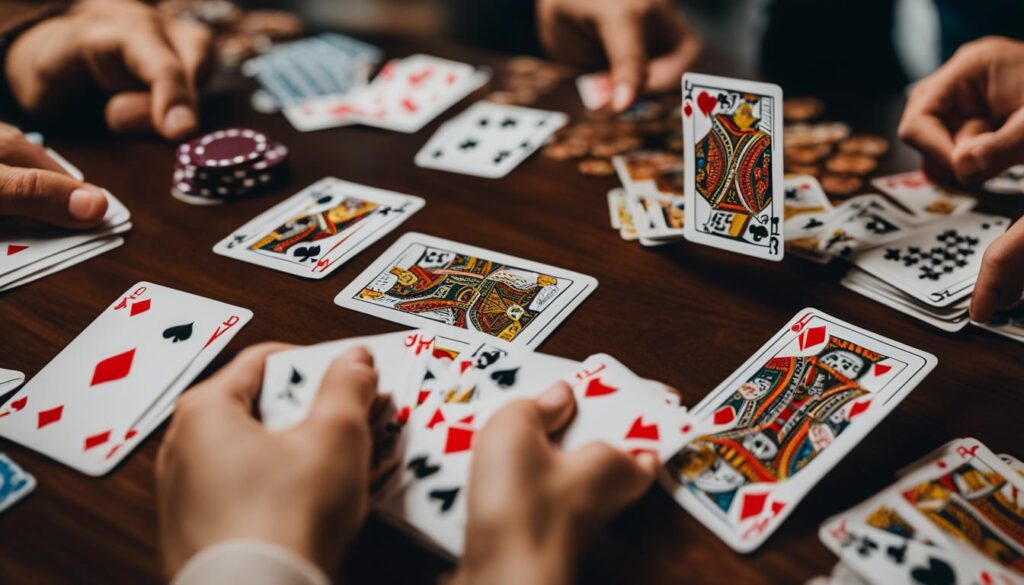
Card matching games are a practical and entertaining way for stroke survivors to improve their memory and enhance cognitive abilities. By incorporating this activity into their recovery routine, individuals can exercise their brain and promote overall healing.
Brain Teasers for Cognitive Challenge
When it comes to cognitive exercises for stroke recovery, brain teasers are a fantastic option. Activities like crossword puzzles, word searches, and Sudoku require analytical thinking, problem-solving, and reasoning skills, making them perfect for stimulating the brain and promoting cognitive function.
Engaging in brain teasers challenges the brain and encourages the formation of new neural connections. By pushing yourself to solve puzzles and find solutions, you can exercise your cognitive abilities and improve problem-solving skills.
For stroke survivors, starting with easier levels and gradually moving to more advanced options is a great way to build confidence and enhance memory and cognitive skills over time. It’s important to challenge yourself without becoming frustrated, allowing your brain to adapt and grow.
Benefits of Brain Teasers for Stroke Recovery:
- Enhanced cognitive function
- Improved problem-solving abilities
- Stimulation of neural connections
- Increased mental agility
- Boosted memory retention
Brain teasers provide an effective and enjoyable way to exercise the brain and improve cognitive function after a stroke. Start incorporating brain teasers into your daily routine and reap the benefits of these engaging cognitive exercises.
| Brain Teasers | Benefits |
|---|---|
| Crossword puzzles | Enhances vocabulary and memory |
| Word searches | Improves attention to detail and visual perception |
| Sudoku | Develops logical thinking and concentration |
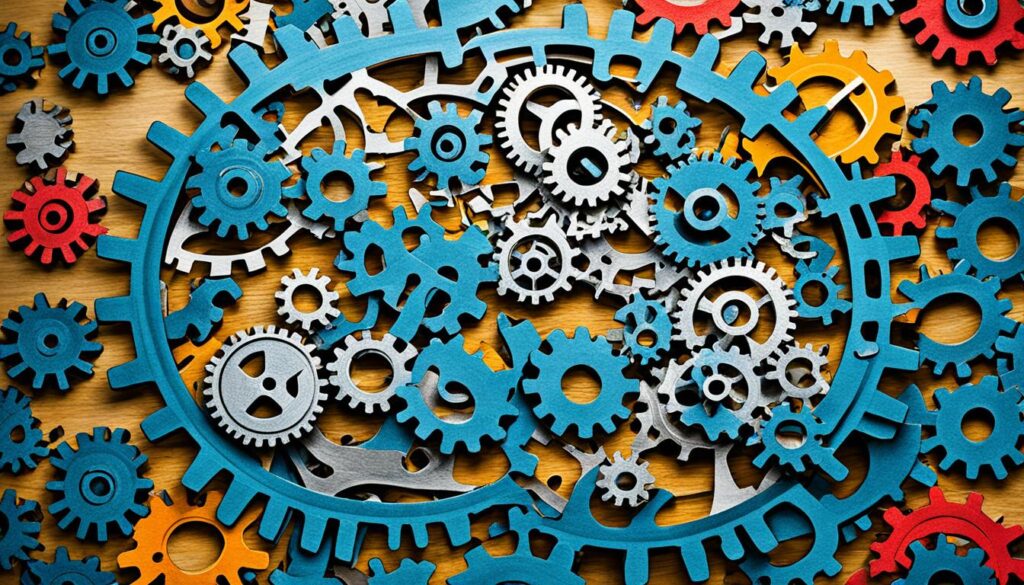
Visual Processing Games for Spatial Skills
When it comes to stroke recovery, visual processing games can be a valuable tool for improving spatial skills and concentration. These engaging activities involve identifying minor differences between side-by-side images, which require individuals to compare and contrast visual information. By incorporating visual processing games into their recovery routine, stroke survivors can stimulate their brain and enhance cognitive function.
Visual processing games provide an opportunity for stroke survivors to exercise their ability to perceive and process visual information accurately. These activities challenge the brain to identify subtle variations in images, improving spatial perception and attention to detail. By engaging in regular visual processing games, stroke survivors can enhance their overall spatial skills and concentration, contributing to a more comprehensive recovery.
One such visual processing game is the classic “Spot the Difference,” where individuals are presented with two similar images and need to identify the disparities between them. This activity promotes visual discrimination and attention to detail, enhancing spatial skills and cognitive abilities.

By playing visual processing games, stroke survivors can engage their brain in a challenging and enjoyable manner, further aiding their cognitive rehabilitation. These games serve as cognitive exercises that target spatial skills, helping to rebuild connections in the brain affected by the stroke.
Benefits of Visual Processing Games for Stroke Recovery
Engaging in visual processing games offers several benefits for stroke survivors on their road to recovery:
- Improved spatial perception and awareness
- Enhanced attention to detail and concentration
- Strengthened cognitive abilities through active engagement
- Opportunity to exercise visual processing skills
- Increased mental stimulation and overall brain health
By incorporating visual processing games into their recovery routine, stroke survivors can make progress in rebuilding their spatial skills and cognitive function. These games provide an enjoyable and effective way to promote spatial perception and concentration, contributing to a successful stroke recovery journey.
| Game | Description | Benefits |
|---|---|---|
| “Spot the Difference” | Identify disparities between similar images | Promotes attention to detail and visual discrimination |
| “Where’s Waldo?” | Find specific characters in a crowded scene | Enhances concentration and visual scanning ability |
| “Puzzle Solving” | Complete puzzles by fitting pieces together | Improves problem-solving and spatial reasoning skills |
By regularly engaging in visual processing games, stroke survivors can reap the benefits of cognitive exercise and promote their spatial skills. These games provide an interactive and enjoyable approach to stroke recovery, contributing to improved cognitive function and overall well-being.
Using Cognitive Therapy Apps for Recovery
Technology has revolutionized the way we access information and engage in activities, and stroke recovery is no exception. Cognitive therapy apps have emerged as a valuable tool for stroke survivors, providing accessible and convenient cognitive exercises and brain training activities. These apps offer a wide range of therapeutic games and exercises designed to improve key cognitive functions such as visual/spatial processing, quantitative reasoning, and analytical thinking.
By downloading cognitive therapy apps on smartphones and tablets, stroke survivors have a portable and readily available resource for engaging in cognitive exercises. This accessibility allows individuals to incorporate cognitive therapy into their daily routine, making it easier to commit to regular practice and reap the benefits of consistent cognitive stimulation.
With cognitive therapy apps, stroke survivors can embark on a personalized journey of recovery, tailoring their exercises to target specific cognitive areas that need improvement. These apps often provide progress tracking features, allowing individuals to monitor their cognitive growth and celebrate achievements along the way. By engaging in these exercises regularly, stroke survivors can enhance cognitive function, promote brain healing, and improve overall recovery outcomes.
The Benefits of Cognitive Therapy Apps for Stroke Recovery
- Portability: Cognitive therapy apps can be accessed anytime and anywhere, empowering stroke survivors to engage in cognitive exercises at their convenience.
- Personalization: These apps offer a range of exercises that can be customized to meet individual needs and target specific cognitive areas requiring improvement.
- Progress Tracking: Many cognitive therapy apps provide features to track progress, allowing stroke survivors to monitor their cognitive growth and celebrate milestones.
- Enriched Engagement: Interactive games and exercises in these apps make cognitive therapy enjoyable and engaging, encouraging regular practice and long-term commitment to recovery.
- Convenience: Cognitive therapy apps eliminate the need for physical materials or appointments, providing a cost-effective and easily accessible solution for cognitive rehabilitation.
Incorporating cognitive therapy apps as part of a comprehensive stroke recovery plan can significantly enhance cognitive function, improve brain healing, and promote a successful rehabilitation journey. Harnessing technology, stroke survivors can embark on a proactive path towards recovery and a brighter future.

| App Name | Description | Targeted Cognitive Areas |
|---|---|---|
| BrainHQ | A comprehensive brain training app offering a variety of exercises to enhance cognitive skills, including memory, attention, and brain processing speed. | Memory, Attention, Processing Speed |
| Elevate | An app designed to improve critical cognitive skills through personalized training sessions, focusing on areas such as memory, problem-solving, and attention. | Memory, Problem-solving, Attention |
| Lumosity | With a collection of brain training games, Lumosity aims to improve cognitive functions such as memory, attention, flexibility, and problem-solving. | Memory, Attention, Flexibility, Problem-solving |
| CogniFit | A scientifically designed app that assesses and trains cognitive skills, targeting areas like memory, attention, coordination, and logical reasoning. | Memory, Attention, Coordination, Logical Reasoning |
| Peak | Peak offers a range of brain training games designed to challenge cognitive skills such as memory, attention, problem-solving, and mental agility. | Memory, Attention, Problem-solving, Mental Agility |
Meditation for Cognitive Enhancement
Engaging in regular meditation practices can contribute to cognitive improvement during stroke recovery. Meditation is a powerful tool that can aid in cognitive enhancement by improving concentration, mental flexibility, and information processing. By directing the mind to focus on a single point of attention, stroke survivors can enhance their cognitive abilities and clear their thoughts.
“Meditation is the key to unlock the mind’s potential for growth and healing.”
– Deepak Chopra
Meditation also provides an opportunity to redirect negative thoughts and promote a positive and empowering mindset. By cultivating a state of calm and relaxation, meditation reduces stress and anxiety, which are common barriers to cognitive function. By incorporating meditation into their daily routine, stroke survivors can optimize their mental well-being and improve cognitive abilities.
Benefits of Meditation for Stroke Recovery
- Enhanced concentration: Meditation trains the mind to focus and sustain attention, improving concentration and reducing cognitive distractions.
- Mental flexibility: Through meditation, stroke survivors can develop flexibility in their thinking processes, enabling them to adapt to new situations and challenges.
- Information processing: Regular meditation can enhance the brain’s ability to process and retain information, improving memory and overall cognitive function.
Getting Started with Meditation
Here are some steps to help you get started with your meditation practice:
- Find a quiet and comfortable space where you can sit or lie down.
- Close your eyes and take deep breaths, focusing on your inhalations and exhalations.
- Clear your mind of any distracting thoughts and bring your attention to the present moment.
- Choose a meditation technique that resonates with you, such as mindfulness meditation or guided visualization.
- Start with short meditation sessions, gradually increasing the duration as you feel more comfortable.
- Consistency is key. Aim to meditate daily to reap the full benefits of this practice.
- Remember to be patient with yourself. Meditation is a skill that develops over time, so allow yourself to embrace the process.
By incorporating meditation into your stroke recovery routine, you can enhance cognitive function, promote mental flexibility, and experience a greater sense of clarity and well-being.
Arts and Crafts for Emotional Expression
Arts and crafts activities offer stroke survivors a unique opportunity to express their thoughts and emotions, contributing to their emotional healing during the recovery process. Engaging in creative endeavors such as drawing, coloring, painting, and crafting stimulates the imagination and fosters emotional well-being. These activities not only provide a channel for self-expression but also improve hand-eye coordination and enhance motor skills.
By incorporating arts and crafts into stroke recovery exercises, individuals can work through their feelings and improve their overall mood. It is a cathartic experience that allows them to explore their emotions in a non-verbal way, helping them connect with their inner selves and find solace. Channeling their emotions through creative expression can contribute to a sense of accomplishment and satisfaction, promoting their emotional well-being and aiding in their journey of recovery.
Engaging in arts and crafts offers a sense of purpose and fulfillment, boosting self-esteem and confidence. The act of creating something tangible provides a visible representation of progress and achievements, serving as a reminder of the strength and resilience exhibited during stroke recovery. Moreover, art and crafts activities can be enjoyed individually or in a group setting, fostering social interactions and a sense of belonging.
“Art washes away from the soul the dust of everyday life.” – Pablo Picasso
Through art and crafts, stroke survivors can find solace, joy, and meaning in their recovery journey. The act of creation and self-expression not only promotes emotional well-being but also aids in cognitive rehabilitation by engaging multiple areas of the brain. Incorporating and encouraging arts and crafts as part of stroke recovery exercises can contribute to a holistic healing experience and provide a positive impact on the overall well-being of stroke survivors.
| Benefits of Arts and Crafts for Stroke Recovery |
|---|
| 1. Emotional expression and healing |
| 2. Improved hand-eye coordination |
| 3. Enhanced motor skills |
| 4. Boosted self-esteem and confidence |
| 5. Opportunities for social interaction |
Crafting as an Outlet for Emotional Expression
Crafting involves the use of various materials and techniques to create unique and personal pieces. Whether it is through knitting, sewing, or collage-making, crafting provides stroke survivors with a medium for emotional expression. The act of manipulating materials and bringing a vision to life can evoke a wide range of emotions, allowing individuals to externalize their feelings and experiences. Moreover, the process of crafting can serve as a form of meditation, promoting relaxation and stress relief.
Conclusion
Stroke recovery is a complex and multifaceted journey that requires a holistic approach. In addition to physical and emotional healing, cognitive rehabilitation plays a crucial role in restoring brain function and improving overall recovery outcomes. By incorporating a variety of brain exercises into a comprehensive stroke recovery plan, individuals can harness the power of neuroplasticity to reorganize and form new connections within the brain.
Engaging in board games, memory games, strategy games, art and crafts, and meditation can effectively stimulate the brain and enhance cognitive function. These activities provide mental challenges, promote creativity, and improve focus, memory, and problem-solving abilities. Regular practice of these brain exercises can lead to significant improvements in cognitive skills and ultimately contribute to a higher quality of life for stroke survivors.
It is important to note that stroke recovery is unique to each individual, and therefore, a personalized approach is crucial. Working closely with healthcare professionals and therapists, stroke survivors can tailor their brain exercise routine to meet their specific needs and abilities. By embracing the power of neuroplasticity and actively participating in cognitive rehabilitation, stroke survivors can maximize their recovery potential and restore vital cognitive abilities.
FAQ
Why are brain exercises important for stroke recovery?
Brain exercises stimulate neuroplasticity and enhance cognitive rehabilitation, aiding in the healing process and helping individuals regain thinking, reasoning, and memory skills.
What is the role of stroke recovery activities?
Stroke recovery activities focus on helping patients regain lost capabilities, specifically targeting cognitive skills that may be impaired after a stroke, such as thinking, reasoning, awareness, and memory.
How can board games help with brain stimulation during stroke recovery?
Board games, such as Connect 4, Qwirkle, and Battleship, require concentration, reasoning, organization, and memory skills, providing effective brain stimulation for stroke recovery.
How do memory games contribute to cognitive enhancement after a stroke?
Memory games like Simon and Tap It challenge individuals to follow and remember short sequences, improving memory skills and aiding in cognitive enhancement during stroke recovery.
What is the benefit of strategy games for stroke recovery?
Strategy games like Catan, Ticket to Ride, and mahjongg require critical thinking and strategic planning, exercising cognitive skills and contributing to cognitive function improvement in stroke recovery.
How do art and crafts activities aid in stroke recovery?
Art and crafts activities stimulate creativity, improve hand-eye coordination, and enhance motor skills, providing therapeutic benefits and cognitive enhancement during stroke recovery.
What role do new hobbies play in cognitive stimulation after a stroke?
Engaging in new hobbies requires the use of memory and communication skills, as well as the engagement of the arms, hands, and legs, stimulating cognitive skills and promoting cognitive rehabilitation during stroke recovery.
How do sequence finding brain teasers challenge the brain during stroke recovery?
Sequence finding brain teasers, such as alphabetizing words in a sentence or arranging laundry by size, challenge cognitive skills like logical thinking, problem-solving, and organization, aiding in cognitive improvement during stroke recovery.
How does counting money contribute to cognitive skills improvement after a stroke?
Counting money requires quantitative reasoning and short-term memory skills, challenging cognitive abilities and providing practical and engaging brain stimulation during stroke recovery.
What is the benefit of card matching games in memory improvement during stroke recovery?
Card matching games exercise memory skills, as individuals have to remember the position of different cards and find matching pairs, aiding in memory improvement and cognitive function enhancement in stroke recovery.
How do brain teasers like crossword puzzles and Sudoku help with cognitive improvement after a stroke?
Brain teasers challenge analytical thinking, problem-solving, and reasoning skills, promoting the formation of new neural connections and stimulating cognitive function during stroke recovery.
What is the role of visual processing games in spatial skills improvement during stroke recovery?
Visual processing games, involving identifying differences between side-by-side images, enhance spatial skills and concentration, aiding in spatial perception and cognitive improvement during stroke recovery.
How can cognitive therapy apps contribute to rehabilitation after a stroke?
Cognitive therapy apps offer therapeutic games and exercises designed to improve cognitive function, visual/spatial processing, quantitative reasoning, and analytical thinking, providing accessible cognitive rehabilitation during stroke recovery.
What is the benefit of meditation for cognitive enhancement in stroke recovery?
Meditation improves concentration, mental flexibility, and information processing, aiding in cognitive enhancement during stroke recovery and promoting a positive and empowering mindset.
How do arts and crafts activities promote emotional expression during stroke recovery?
Arts and crafts activities provide a means of emotional expression, stimulating creativity, improving hand-eye coordination, and enhancing motor skills, contributing to emotional well-being and overall healing in stroke recovery.
How do brain exercises aid in stroke recovery?
Brain exercises stimulate neuroplasticity, promote cognitive rehabilitation, and aid in the healing process, allowing individuals to regain lost thinking, reasoning, and memory skills after a stroke.
